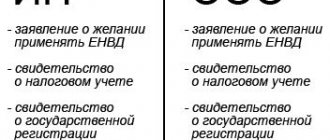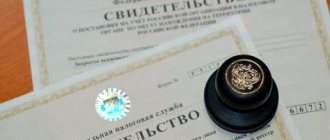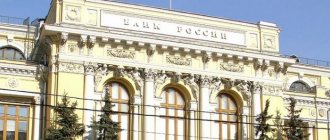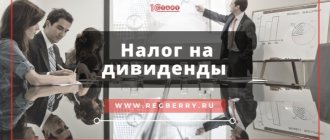Tax Rates VAT is a specific value used to calculate the tax amount. To calculate VAT, basic and estimated rates are used.
Value added tax is quite rightly considered one of the most complex in the Russian tax system. VAT tax rates were last revised in 2004, and now, 14 years later, in 2018, the main indicator was increased from 18 to 20 percent. However, until the beginning of 2021, the old rules apply. We wrote about what to do during a difficult transition period in the article “How to prepare for the transition to a new VAT rate of 20%?”, having analyzed the latest letters from the Federal Tax Service and the Ministry of Finance with explanations of certain difficult cases.
What are the rates?
According to Article 164 of the Tax Code, the sale of goods, services or work can be taxed at three different rates. Here's to :
- 0%;
- 10%;
- 18%.
The size of the rate depends on exactly what goods, services or work and within the framework of what operation a particular businessman or company sells. Let's take a closer look at each rate: how much percent of VAT is in 2021 and for what.
Also see "VAT rates in 2021".
There have been quite a lot of VAT changes in 2021. However, the rates for this tax were not affected. For more information, see “VAT changes from 2021”
VAT 0% on re-export and international railway transportation
Federal Law No. 350 of November 27, 2021 introduced a zero VAT rate for transactions involving the sale of goods exported as part of re-export . The rule applies to goods that were previously placed under processing procedures in a customs territory, free warehouse or free customs zone.
In accordance with Article 165 of the Tax Code of the Russian Federation, in order to confirm the zero rate for re-export, in addition to the standard package of documents, you must submit:
- foreign trade contract (original + copy);
- customs declarations (original + copy);
- transport and shipping documents (copies).
And another change affected organizations providing rolling stock and containers for the export of goods. Previously, they could apply 0% VAT, provided that the trains (containers) provided belong to them by ownership or lease. Now this condition has been canceled.
Zero percent
There are a number of industries that in Russia are not subject to value added tax at all. Sometimes, in order to follow the spirit of the Tax Code, they are given zero VAT. These productions are specific. These include, for example, the space industry.
Also, zero VAT is due to those companies that produce their goods for sale abroad. This rule is spelled out in the first paragraph of Article 164 of the Tax Code. True, in order to take advantage of this right, manufacturers (suppliers to foreign markets) must document that their goods are for export only. To do this, according to Article 165, the company must submit the appropriate set of documents to the Federal Tax Service.
And another case when you can count on zero VAT is the provision of services for the international transportation of various goods, luggage or passengers. That is, transport companies usually do not pay this tax. They have slightly different forms of taxation.
These benefits are quite stable, so companies in these areas do not worry about the amount of VAT for them.
Other changes
A couple more changes concern a narrow circle of people.
The first of them relates to special economic zones (SEZ). The gratuitous transfer to regional and municipal authorities of property created for the implementation of the agreement on the creation of a SEZ is not subject to VAT. Transferring organizations are not required to restore the amounts of VAT previously accepted for deduction on this property upon its transfer.
Another specific change is that the release of material assets from the state reserve by the responsible custodian and the borrower due to their renewal, replacement or borrowing is exempt from VAT.
Ten percent
The reduced VAT rate of 10 percent applies only to certain groups of goods. Their list can be found in Article 164 (clause 2) of the Tax Code, as well as in the following decrees of the Government of the Russian Federation:
- No. 688 dated September 15, 2008;
- No. 908 dated December 31, 2004;
- No. 41 dated January 23, 2003.
First of all, such products for which VAT is 10 percent include food and children's goods. True, not all products, but only those that are included in the main food basket. For example, milk and bread will be subject to reduced taxes. But red fish meat will already be sold at full rate.
Sellers of medicines and various medical supplies can also count on 10% VAT. True, a particularly important part of them, by law, may generally be exempt from taxes. The rest is at a reduced rate.
But in any case, when one wonders how much VAT is in Russia and whether it is possible to pay at a reduced rate, one must be guided by the listed acts of the Government. VAT 10% applies only to those types of goods that are expressly indicated in them. In other cases, full VAT goes to the budget.
New tax objects and tax agents
In accordance with Law No. 335-FZ of November 27, 2021, from January 1, 2021, were subject to VAT :
- raw animal skins;
- scrap and waste of ferrous and non-ferrous metals;
- secondary aluminum and its alloys.
Persons who buy or receive these goods, with the exception of citizens without individual entrepreneur status, are recognized as tax agents for VAT (clause 8 of Article 161 of the Tax Code of the Russian Federation).
Thus, regardless of whether the subject is a VAT payer, when purchasing the specified goods, he must calculate and pay tax to the budget, as well as submit reports.
Settlement rate
When answering the question, VAT is how much, sometimes in addition to the standard rates (0, 10 and 18%) they indicate the so-called estimated tax rate. It is calculated using the formula 10/110 and 18/118. This is determined by Article 164 (clause 4) of the Tax Code.
A similar calculation is made when it is necessary to allocate VAT. That is, both of these values show exactly how much tax is included in the cost of the product or transaction. This approach to calculations is used, for example, if the seller receives an advance payment for goods that he only promises to deliver in the future.
Also see “How to allocate VAT”.
Application of the 5% rule
The so-called 5% rule applies to entities that carry out transactions both subject to and exempt from VAT. They must keep separate records of tax amounts to determine what portion of the VAT relates to taxable transactions and can be deducted, and what is subject to inclusion in the cost of goods because it relates to non-taxable activities. If in a tax period the share of costs for transactions not subject to VAT does not exceed 5% , the entire tax can be deducted.
The condition for applying the rule looks like this:
Expenses for the period on transactions not subject to VAT / Expenses for the period related to sales * 100% ≤ 5%
When this inequality is fulfilled, the entire VAT is deductible.
This was the case before, but the Tax Code allowed not to keep separate VAT records when the 5% rule was met. Now it is mandatory to keep separate records in any case . In addition, if a product is used only in non-taxable transactions, then the 5% rule does not apply to it.
In the absence of separate accounting, VAT can neither be deducted nor included in income tax expenses.
How to pay
For all types of VAT (10% or 18%) there is a single tax payment system. Thus, those who sell goods or conduct other types of operations on the territory of the Russian Federation must report every quarter. Moreover, payments occur not once every three months, but monthly at 1/3 of the VAT amount. And it is important to deposit money into the budget no later than the 25th of each month.
Those who import goods into Russia from EAEU countries report to the tax office once. In this case, the tax is paid no later than the 20th day of the next month, after the goods have been imported into our country.
Tax-free mechanism
The next innovation related to VAT concerns foreign buyers who make purchases in Russia, as well as sellers of these goods. From January 1, 2021, a tax-free system was introduced (Law No. 341-FZ of November 27, 2021). The new rules are regulated by Article 169.1 of the Tax Code.
The tax-free system consists of refunding VAT on purchases by foreigners made in Russia. The conditions are:
- The buyer is a foreign person, a citizen of a state that is not part of the EAEU.
- Goods must be purchased within a calendar day for an amount of 10 thousand rubles or more. The price is inclusive of VAT.
- You should receive a VAT refund receipt from the seller. It is issued on the basis of one or more cash receipts upon presentation by the buyer of an identity card.
- No later than three months from the date of purchase, goods must be exported from Russia through a customs control point.
- A foreigner must apply for tax compensation no later than one year from the date of purchase.
Sellers will be able to deduct VAT returned to foreign citizens. However, for this you need to meet certain conditions:
- carry out retail trade;
- be a VAT payer;
- be included in the list approved by the Ministry of Industry and Trade.
In addition, the location of retail stores and the conditions they must meet will be determined by the Government.
VAT refund to the seller will be carried out on the basis of a tax refund check upon fulfillment of the following conditions:
- the receipt bears a mark from the customs authority regarding the export of the goods;
- The buyer is compensated for the amount of tax.
If there are inaccuracies in the tax-free check, the tax authorities do not have the right to refuse the seller a deduction. The main thing is that you can use it to install:
- seller;
- country of citizenship of the foreigner;
- Name of product;
- VAT amount.
VAT: what percentage in 2018
We hasten to please you: tax rates for 2021 have not changed compared to the previous period. However, the authorities for air transportation to the Crimean peninsula are currently keeping the VAT tax rate at 0 percent.
The following figure shows how much VAT is in 2021, according to the Russian Tax Service.
Read also
19.08.2016
Will real estate prices rise?
Experts agreed that the news about the VAT rate increase is negative. In Russia, the purchase of an apartment is not subject to tax, but an increase in VAT will cause an increase in the cost of goods and services in the construction industry. According to various estimates, construction will cost companies 1-3% more. Home buyers will have to pay for this increase in price, since developers are not ready to reduce the profitability of their business.
As a result of the VAT increase, according to experts, construction and finishing materials, fittings, elevators and other equipment, as well as IT services used in construction, should become more expensive. We should also expect a reduction in the effective demand of the population, because citizens will have to buy all goods at higher prices. The rate of inflation may accelerate and, accordingly, the decline in mortgage rates may stop.
When there is no right to deduct input VAT
Also, changes to VAT from January 1, 2021 affected recipients of subsidies and investments from the treasury. From this date, payers do not have the right to deduct input VAT on goods, works or services purchased at the expense of these government funds (new clause 2.1 of Article 170 of the Tax Code of the Russian Federation).
There is no right to deduct VAT even if the subsidy goes to the authorized capital of the enterprise.
In connection with this amendment, the tax restoration mechanism is spelled out in more detail, when the subsidy pays for the purchase price, but partially.
Also see “The most common VAT violations for 2021”.
What about contributions?
The preferential rate will be made permanent. From 2021, contributions were supposed to increase by 4 percentage points, but they will not increase. Because of this, the budget will lose 1 trillion rubles a year. A return to the increased rate would have hit the business hard: the cost of goods and services would have increased and this would have been reflected in the price. So this bill protects both businesses and consumers.
Higher salaries will have to pay more contributions. If your salary for the year is more than 1.021 million rubles (that’s a little more than 85 thousand per month), you now need to pay 10% of the excess for pension insurance. This is how it works now, but the excess contributions were only valid until 2021. This condition is proposed to be maintained indefinitely.
In 2021, the salary limit for contributions will be higher. For example, since 2021 it has grown by more than 20%. The current limit is 85 thousand rubles per month, but in 2021 it could be 130 thousand - the government will decide this.
The list of airport services will be established by the Government of the Russian Federation
As you know, there is no VAT on services provided directly at Russian airports and the airspace of our country for aircraft maintenance, including air navigation services (subclause 22, clause 2, article 149 of the Tax Code of the Russian Federation). But what exactly are these airport services? It seems that the long-standing confusion on this issue has come to an end.
Thus, Law No. 305-FZ dated October 30, 2017, with amendments to the Tax Code of the Russian Federation, says that from January 1, 2018, the list of airport services that are free of VAT is determined by a separate document by the Government of the Russian Federation.






